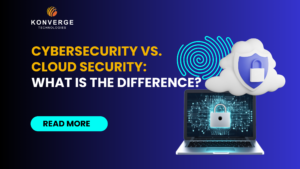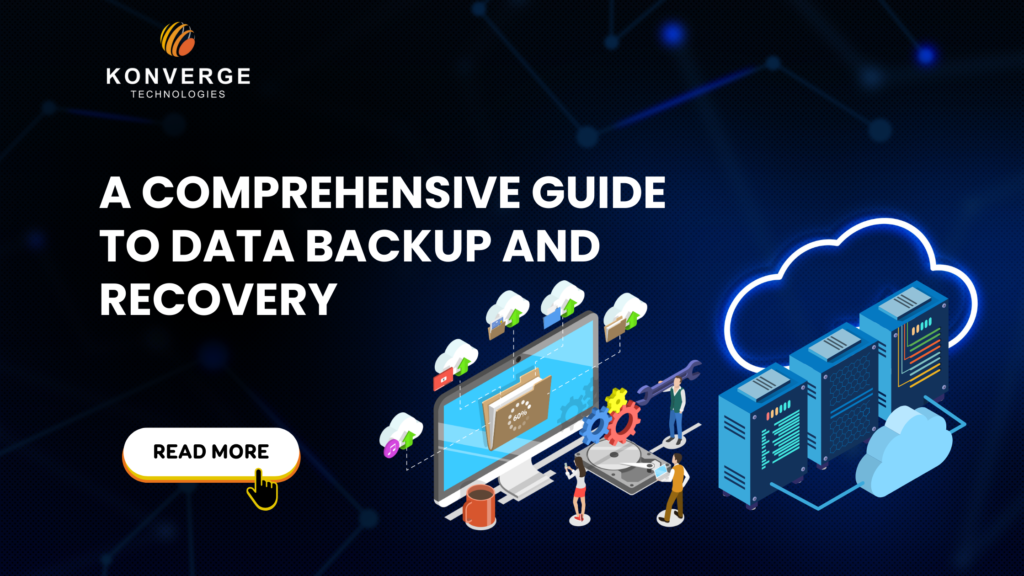
A Comprehensive Guide to Data Backup and Recovery

Introduction:
In today’s digital age, where businesses rely heavily on data for their operations, ensuring the safety and security of that data is paramount. This is where data backup and recovery strategies come into play. In this comprehensive guide, we’ll delve into the intricacies of data backup and recovery, exploring its importance, impact on businesses, types of data recovery, and factors to consider when choosing a data backup solution.
What is Data Backup and Recovery:
Data backup refers to the process of creating copies of important data to protect against loss, corruption, or theft. These backups are stored in secondary locations, either onsite or offsite, to ensure redundancy and resilience. On the other hand, data recovery involves restoring the backed-up data in the event of a disaster or data loss incident. This process aims to minimize downtime and restore normal business operations as quickly as possible.
How Can Data Loss Impact A Business:
Financial Loss:
- Data loss leads to lost revenue, compliance fines, and recovery expenses.
- Business interruptions result in missed opportunities and increased costs.
Operational Disruption:
- Disrupted operations cause delays, inefficiencies, and decreased productivity.
- Access to critical systems and applications is hindered, affecting collaboration.
Damage to Reputation:
- Data breaches tarnish reputation and erode customer trust.
- Negative perception impacts brand image and competitiveness.
Regulatory Compliance:
- Non-compliance with regulations like GDPR and HIPAA results in penalties.
- Backup strategies ensure protection of sensitive data and regulatory compliance.
Loss of Intellectual Property:
- Stolen data leads to loss of valuable intellectual property.
- Protecting IP through backup and recovery is crucial for business continuity.
Customer Dissatisfaction:
- Disruptions in service and support lead to dissatisfied customers.
- Failure to meet expectations results in churn and damage to brand reputation.
Long-Term Business Impact:
- Data loss can have lasting effects on business viability and sustainability.
- Investing in backup and recovery ensures resilience and growth.
Why is Backup and Recovery Important:
Backup and recovery are crucial for safeguarding critical business data and ensuring business continuity. By implementing robust backup and recovery strategies, businesses can mitigate the risks associated with data loss and minimize the impact of potential disasters. Backup and recovery mechanisms provide a safety net against various threats, including cyberattacks, hardware failures, natural disasters, human errors, and software glitches. They enable businesses to recover quickly from disruptions and resume normal operations with minimal downtime.
Risk Mitigation:
- Backup and recovery strategies mitigate the risk of data loss due to various factors such as hardware failure, human error, cyberattacks, and natural disasters.
- By creating redundant copies of data, businesses can ensure that critical information is preserved and accessible even in the event of unexpected incidents.
Business Continuity:
- Effective backup and recovery plans enable businesses to maintain operations and minimize downtime during data loss scenarios.
- Rapid data recovery ensures that essential systems and services can be restored promptly, reducing disruptions and mitigating financial losses.
Compliance Requirements:
- Many industries have regulatory requirements mandating the implementation of robust data backup and recovery measures.
- Compliance with data protection regulations such as GDPR, HIPAA, and PCI DSS necessitates the implementation of backup solutions to safeguard sensitive information and ensure legal compliance.
Protection of Intellectual Property:
- Backup and recovery solutions help protect valuable intellectual property, including proprietary business processes, trade secrets, and customer data.
- Safeguarding intellectual property through regular backups ensures that businesses can maintain their competitive edge and preserve their innovative capabilities.
Reputation Management:
- Data breaches and prolonged downtime can damage a company’s reputation and erode customer trust.
- Effective backup and recovery strategies demonstrate a commitment to data security and resilience, enhancing customer confidence and brand reputation.
Cost Savings:
- Proactive data backup and recovery strategies can help businesses avoid the financial repercussions associated with data loss and downtime.
- While initial investment in backup solutions may be required, the long-term cost savings from mitigating data-related risks far outweigh the expenses incurred.
Competitive Advantage:
- Businesses that prioritize backup and recovery gain a competitive advantage by ensuring uninterrupted operations and superior data protection.
- Robust backup and recovery capabilities contribute to enhanced resilience, agility, and customer satisfaction, positioning organizations for long-term success in a dynamic business environment.
What is the Difference Between Backup and Recovery:
While backup and recovery are closely related concepts, they serve distinct purposes in data management. Backup involves creating copies of data to protect against loss, while recovery focuses on restoring the backed-up data to its original state after a loss or disaster. In essence, backup is a proactive measure aimed at preventing data loss, whereas recovery is a reactive process that comes into play when data loss occurs. Backup ensures data availability and redundancy, while recovery ensures data integrity and continuity.
What Are the Types Of Data Recovery:
Data recovery encompasses various techniques and methods for retrieving lost or corrupted data. Some common types of data recovery include:
- File-level recovery: Restoring individual files or folders from backups.
- Disk imaging: Creating exact replicas of entire disk volumes for recovery purposes.
- Cloud-based recovery: Leveraging cloud storage services for offsite backup and recovery.
- Bare-metal recovery: Rebuilding a system from scratch using backup images.
- Database recovery: Restoring databases to a previous state using transaction logs or backups.
Each type of data recovery has its advantages and limitations, and businesses should choose the most suitable approach based on their requirements and infrastructure.
What Factors Should You Consider While Choosing A Data Backup Solution:
When selecting a data backup solution, several factors should be taken into account to ensure effectiveness and suitability. These factors include:
- Scalability: The ability to scale the backup solution according to changing data volumes and business needs.
- Reliability: The reliability and durability of backup storage media and infrastructure.
- Security: Robust encryption and access controls to protect sensitive data from unauthorized access.
- Ease of use: Intuitive user interfaces and automation capabilities to simplify backup and recovery processes.
- Cost-effectiveness: Balancing cost with features and performance to achieve optimal value for money.
- Compliance: Ensuring that the backup solution complies with relevant industry regulations and data protection standards.
By evaluating these factors carefully, businesses can choose a data backup solution that meets their specific requirements and provides comprehensive data protection.
Data backup and recovery are essential safeguards for any business, shielding against financial losses, operational hiccups, and regulatory headaches. At Konverge Technologies, we specialize in crafting tailored solutions to keep your data safe and your operations smooth. Don’t risk your business’s future. Contact us today, and let’s fortify your data defenses together!
Recent Posts


What is the future of Robotic Process Automation get Insights into Future Growth and Potential


